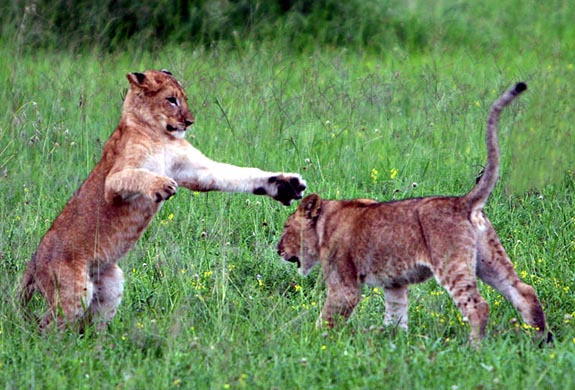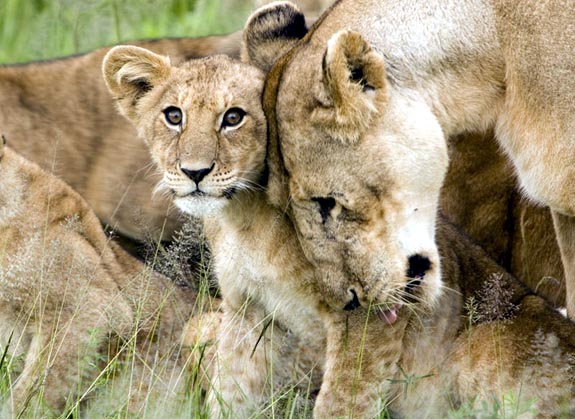Panthera leo
HDW ENTERPRISES &
Foothill Felines Bengals/Savannahs



L ions are the second largest living cat; only the "Tiger" is larger. In the wild, lions normally live an average of 10-14 years, but in captivity, they can live up to 20 years. The African Lion is an extremely vulnerable species whose population has declined between 30 to 50% over the past two decades. In order to survive, African lions must now live in designated reserves and national parks. Even then, they are still susceptible to natural predators, natural disasters, and to human poaching and hunting. The loss of this lion's natural habitat and ongoing conflicts with humans are considered the greatest causes of concern.The oldest lion-like fossil is known from Laetoli in Tanzania and is thought to be about 3.5 million years old; some scientists have identified the remains as Panthera leo. The oldest confirmed records of Panthera leo in Africa are about 1.5 million years old. The closest relatives of the lion are the other Panthera species: the Tiger, the Jaguar and the Leopard. Together, these four cats make up the "Big Cats" of the Panthera family. Genetic research shows that the Tiger was the first of these recent "Big Cat" species to diverge. About 1.9 million years ago, the Jaguar branched off the remaining group, which contained ancestors of the Leopard and the Lion. Then about 1 to 1.25 million years ago, the Lion and Leopard subsequently separated from each other.
|
 | © 1996-2008 Copyright
by HDW Enterprises, Inc. - All Rights Reserved. 
HDW Enterprises, Inc., P.O. Box 418104, Sacramento, CA 95841-8104 (916) 481-CATS ph/fax http://www.hdw-inc.com e-mail: holly@hdw-inc.com |